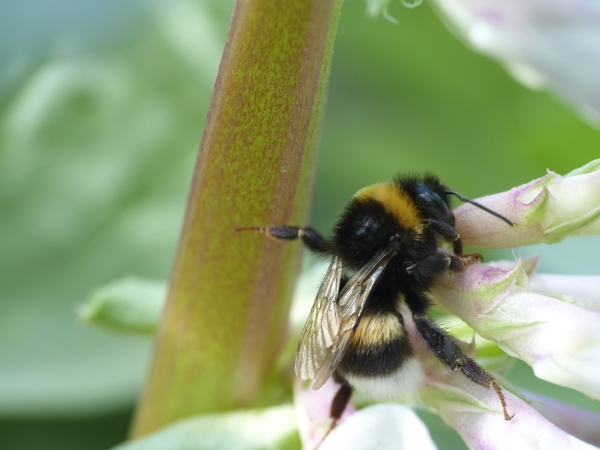Pollination by insects is essential for the production of many food crops. The presence of pollinators, such as bees, depends on the availability of nesting sites and sufficient food. If these conditions are lacking, the pollinators also fail to appear and the yield of flowering arable crops, such as broad beans or oilseed rape, suffers as well.
A team from the University of Göttingen and the Julius Kühn Institute (JKI) in Braunschweig has investigated how the composition of flowering crops and semi-natural habitats in the landscape affects the density of bees, their behaviour when collecting nectar, and the faba bean (Vicia faba) yields. The results of the study have been published in the journal Basic and Applied Ecology.
The researchers show that in landscapes with a high proportion of semi-natural habitats and in landscapes with a high proportion of faba beans, more bumblebees were found in the bean fields. In addition, the bean yields were higher here. The scientists recorded and observed the foraging behaviour of honeybees and wild bees in bean fields in agricultural landscapes with different landscape compositions. They also worked out the parameters for the yield for an individual plant.
Continue reading at Göttingen University
Image via Göttingen University


